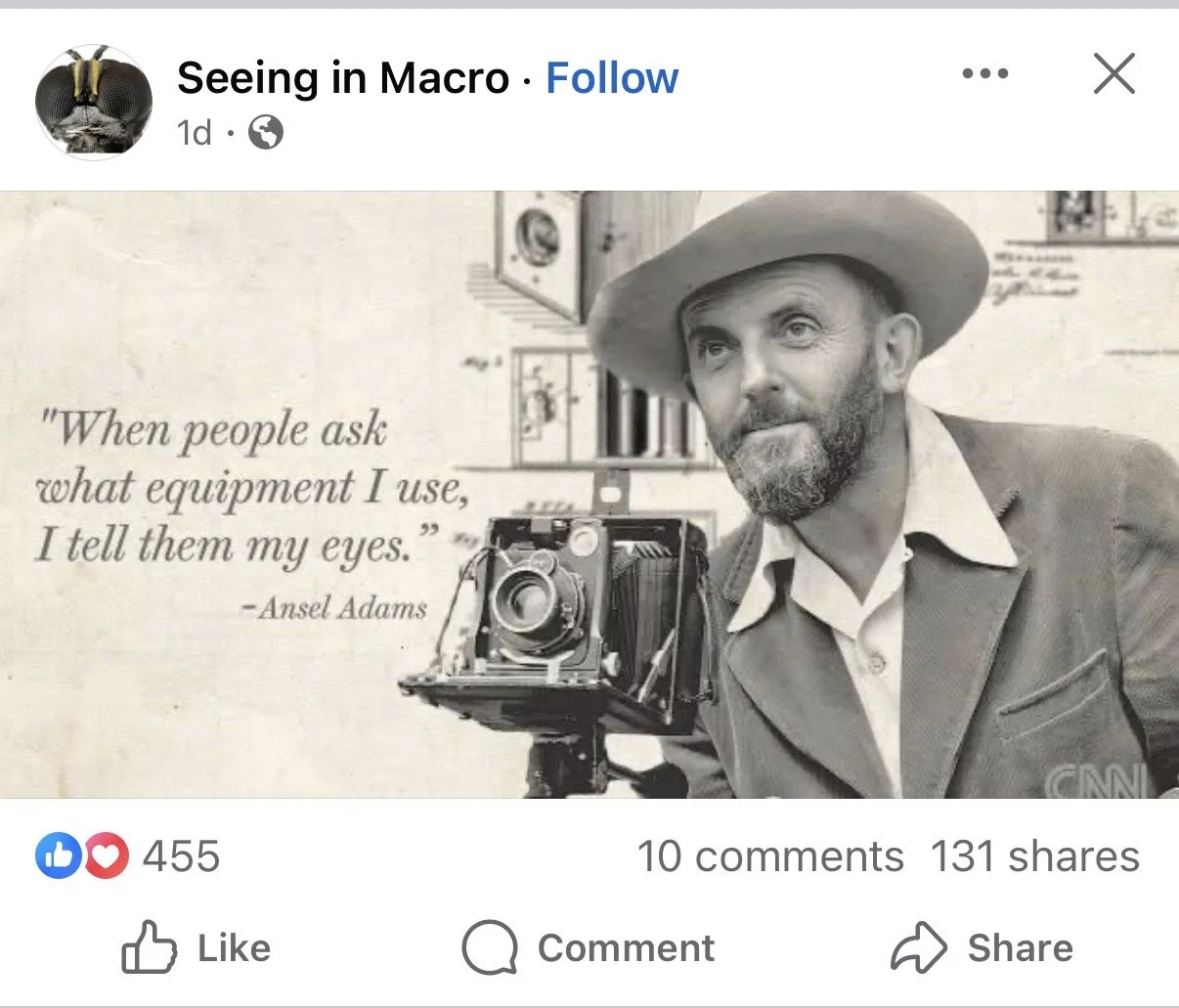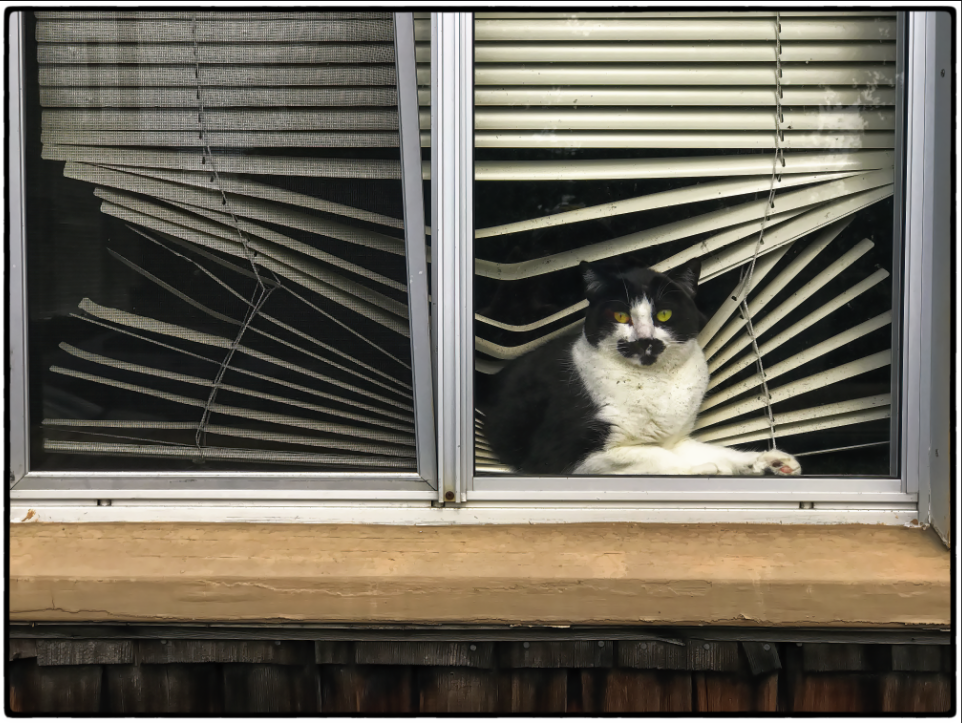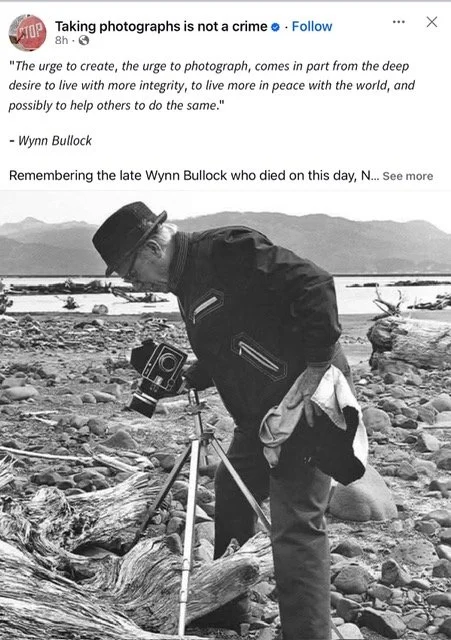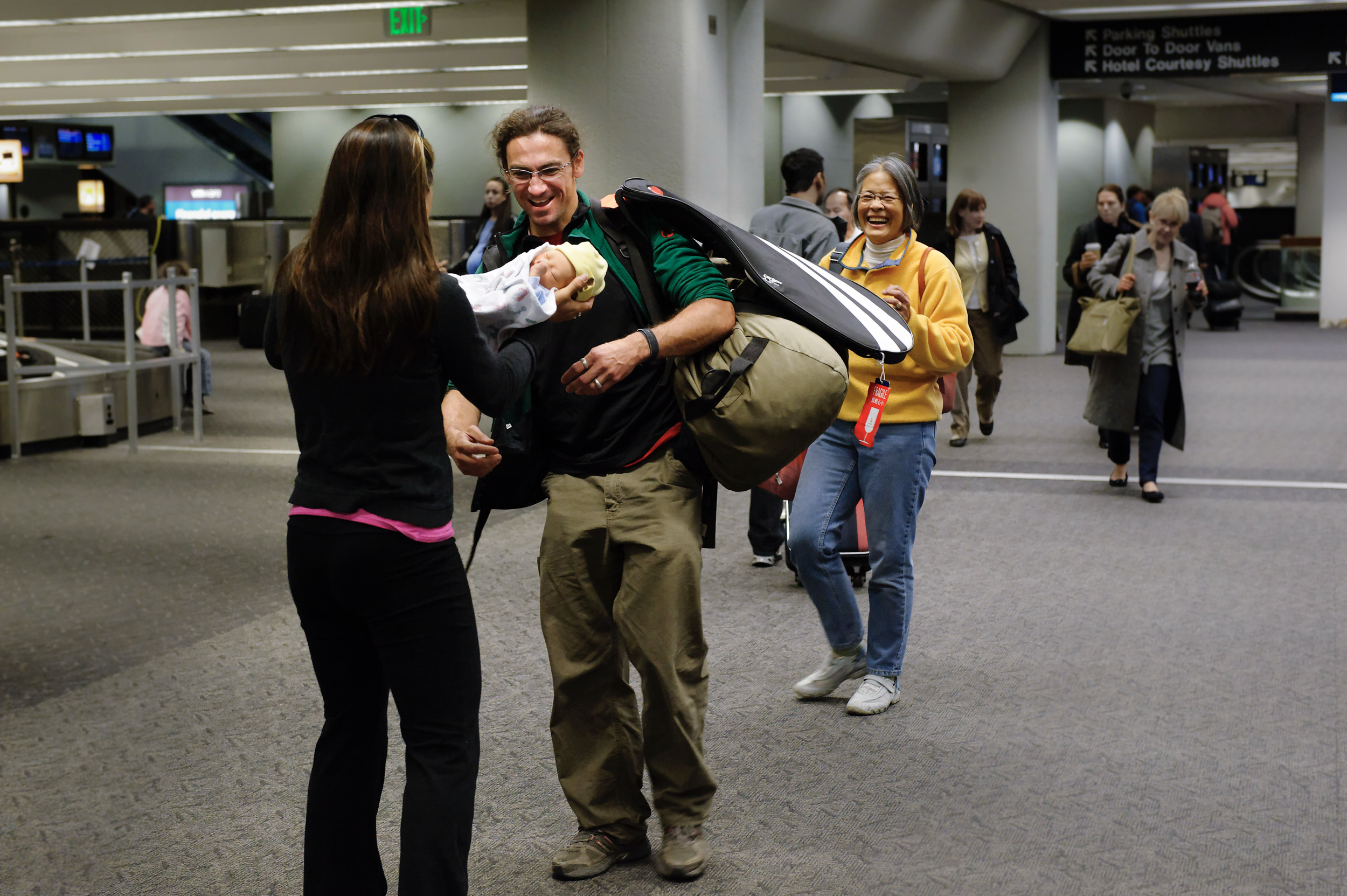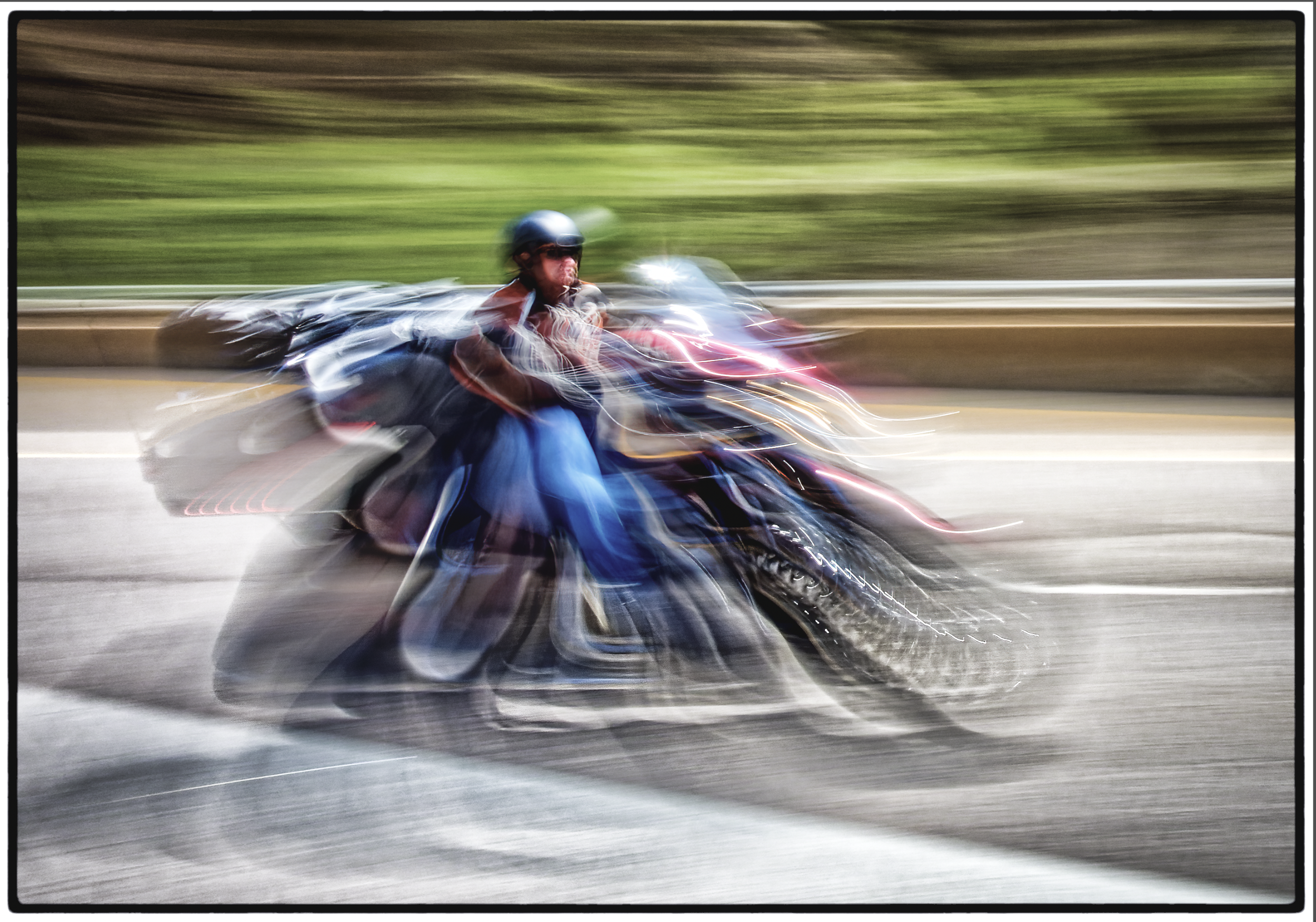If I had your hammer I wouldn’t be a carpenter. If I had your scalpel I would suggest you choose someone else to operate on you. If I carried Callaway clubs it wouldn’t be my age alone that would prevent me from joining the PGA. We respect the skilled carpenter, the surgeon, the golf pro. They are artists, and those are their tools. Why do so many think that the camera is the artist here? Is it because camera companies convinced you that their camera was all that stood between you and museums and galleries?
Good photographers don’t spend nearly as much time dealing with their equipment as they do refining their ability to see and recognize what that equipment can do to fulfill their vision.
Annie Liebovitz said about the seeing part of photography.“It’s not something you can turn off.” Jadyne said that about me. “You’re always looking.” “Yes,” I replied. “I am.” I’ve heard veiled criticism about this passion. Some suggest that in spending as much time with a camera in front of my face I’m missing so much. They’re twice wrong. The camera isn’t in front of my face. My eyes are. I see more than they can imagine. I see the way the woman in the black dress moves out of the shadows and into the sunlight, an image I took through a bus window in Cairo. The simplicity of the lines and shapes interrupted by the lone figure makes this something more. Everyone else was looking at their phones. It’s because I’m looking, not because there’s a camera there.
Because I’m Looking…
I see and recognize events in my life that merit attention. I was taking a photograph of a blind man and his daughter in a restaurant. Upon hearing the girl reading the menu out loud to her father, the diner in the next booth, puzzled by hearing the girl’s voice, turned around and stared. This is the real image, a slice of life.
I Look For Things that Reveal Truth
What is truth in a photograph? Truth enters the image when it transcends the mere representation of something. In this case the cat’s climbing through and bending the blinds reveals a truth about the nature of cats. This isn’t only a photograph of a cat; it’s a photograph of all cats
In this photograph of a preschool child dressing up the image reveals a truth about all children. N.B. Her feet are in the wrong shoes.
Mexicans cut our lawns, prune our trees, cook our food, wash our cars, pick our vegetables, build our decks, and paint our houses. They do these jobs with care and precision. And they do them all anonymously. This is one of a series of photographs I took of the workers who painted my house four or five years ago. In none of the images did I reveal their faces. No Latino signature appears at the bottom of the canvas that is our house. Anonymity in the USA is a truth for Mexican laborers, too, albeit an inconvenient one.
Photographers look at what they do as a creative act. They transform a dynamic three-dimensional world into a static two-dimensional one, arresting motion and revealing something that others miss. In “helping others do the same,” as Wynn Bullock said, the goal is to share the vision, the truth, the essence of things many miss, ignore, or take for granted.
The key word is “make.” Photographers don’t take, they create, add, transform, they “make.”
What Photographers Make
Photographers make by recognizing, identifying, and transforming what they see into something that through their photographs they hope others see and feel, too. In best cases there is a coming together of the elements that make up the photograph with the vision that inspired the photographer to push the button. Sometimes it’s a visual representation of a scene, a place where light and shadow, color and composition, shapes and figures, align in a new and interesting way.
Sometimes it’s more than that. This photograph is one of my favorites. Sixteen years ago our daughter Jennifer gave birth to a son. Andrew, her husband, was in Kathmandu, sitting on a sofa seeing the birth on Skype. When he was finally able to fly to the USA Jennifer was there with baby Susanto, presenting Andrew with his first child. This is that moment. Andrew sees his son for the first time. All the photographic elements are trumped by feeling as the photograph reveals it.
Jennifer, Susanto, Andrew, Jadyne
#70, Glenwood Springs, CO
I didn’t take this image. I made it. I made it by combining a slow shutter speed, panning the camera while the shutter was open, and I was lucky. I could have used a fast shutter speed and frozen both the bike and the rider, but I wanted to convey the feeling of movement and speed with what it feels like to ride a motorcycle, and this was the result. Again illustrating the feeling was my goal.
In this image my timing was spot on. This is the flower girl at a friend’s daughter’s wedding. Look at her face. Feeling wins again. Good photographs make the viewer feel what the photographer felt when the image was taken. Or made.
And one more favorite. We were visiting the spot in China where Mao swam across the Yangtze River when a number of uniformed Chinese came to pay respects. One woman brought her child. He’s packing. The image is a jarring juxtaposition of a little boy as a soldier, a pistol at his side, soldiers standing next to him, and the cartoon words on his pants.
If You Had My Camera
Would you recognize that the dead tree, the sand dunes, and the faraway mountains, all of which are separated by miles could make a decent photograph if you stood far back from the tree and used a massive telephoto lens, thereby compressing the image, bringing the elements close together, and making something that most people would pass by without a glance?
Mesquite Dunes
Life Isn’t Always Serious
These next two images convey humor in everyday life. The first is from a parade in 2006 called “How Berkeley Can You Be?” The tree was in the parade. He stopped in front of the two tie-dyed women.
Haru. To meet him face to face I had to lie on the sidewalk. That isn’t easy for a man about to turn 80. Actually, the getting down wasn’t the problem; it was what followed.
Ask yourself, if you had my camera would you lie on the sidewalk, would you be able to trip the shutter to catch the tie-dyed women, the motorcyclist, the father’s expression, the cat in the window, the woman in the sunlight, the Chinese boy, the flower girl? Some believe it was luck. A great golfer once responded to that by saying, “The more I practice the luckier I get.”
